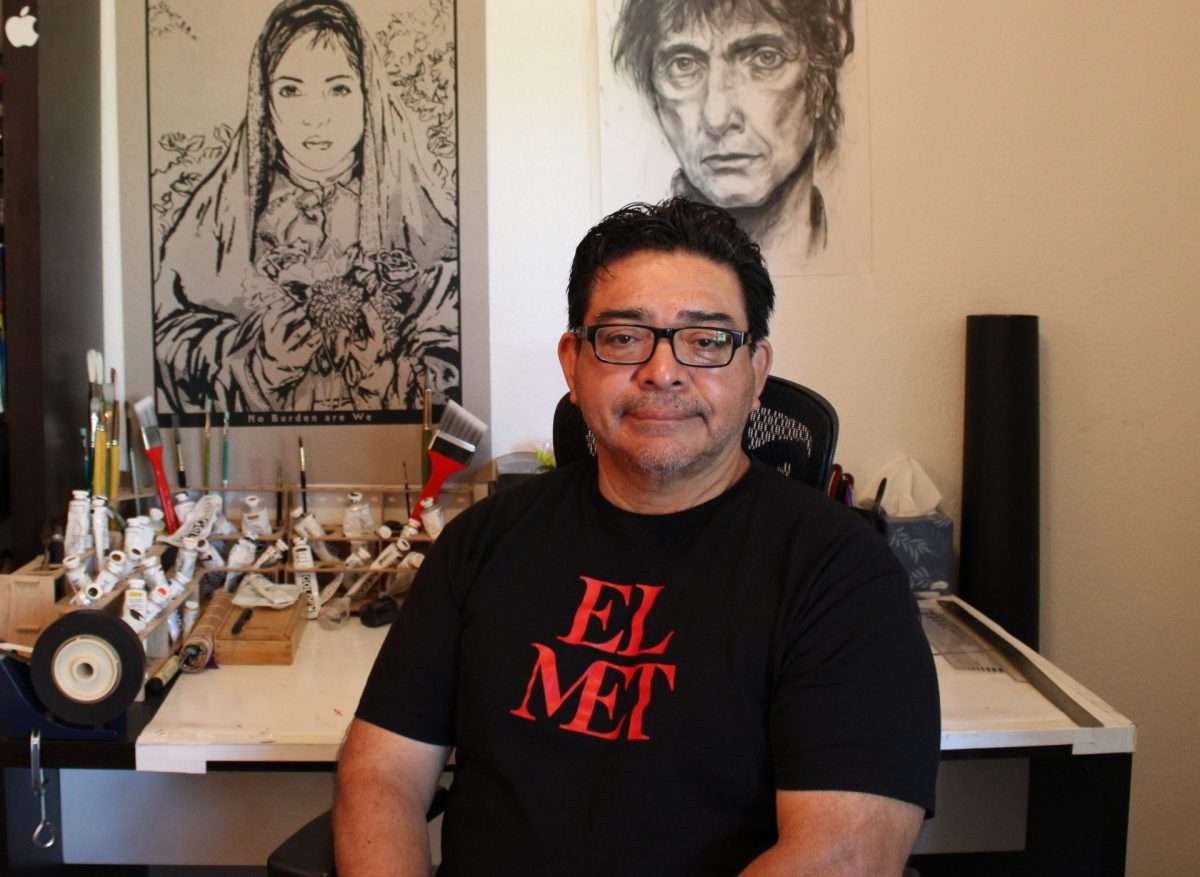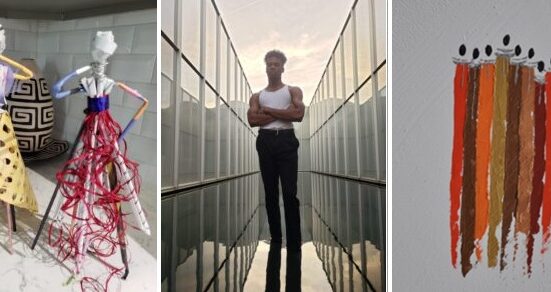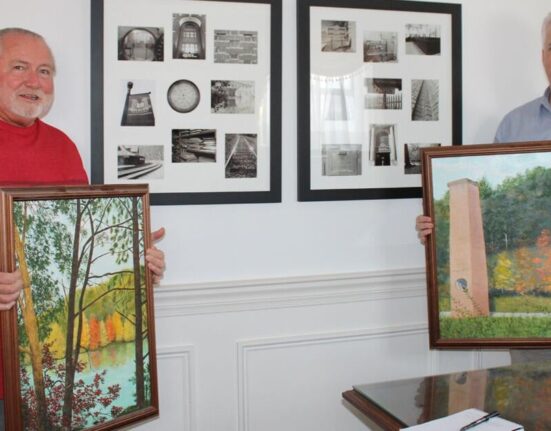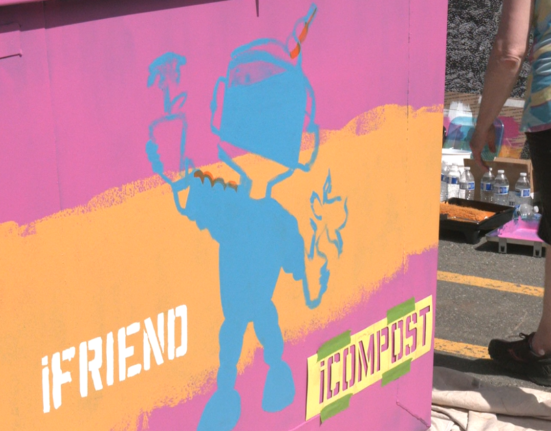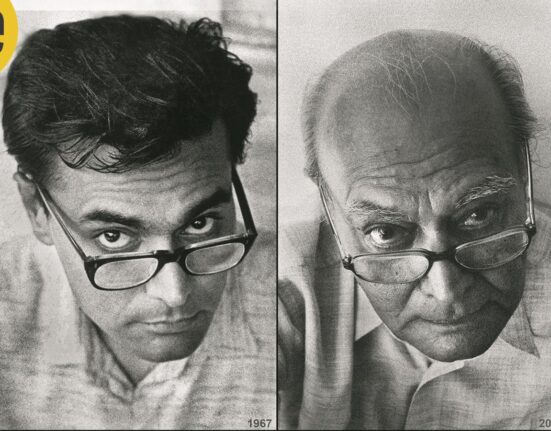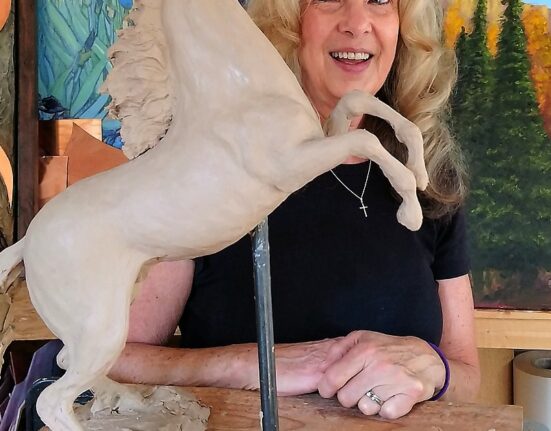BRAWLEY — Anthony Sigala is a contemporary Mexican-American figurative artist who was born and raised in Brawley. His studio is currently based at his home in Brawley, where he creates art that depicts the human form in its graceful complexity, movement and many individual cultural identities.
This past year, Sigala applied for and received a grant from Far South Border North, initiated by San Diego County through the California Arts Council. The focus of this grant is to bring cultural awareness to Imperial and San Diego counties through art in all forms.
Sigala chose to focus on social justice and civil engagement for his project this past year and collaborated with the Alliance organization in San Diego and its “Start with Dignity” campaign.
“Alliance is a community organization whose mission is to build collective power so we can create an inclusive democracy. By working together to engage effectively in the civic process, we can make systemic change and shape a future that belongs to all of us,” Sigala said. “Together, we can create a more inclusive democracy where everyone can exercise their human dignity in an environment of harmony, safety, equality and justice.”
Sigala has never worked in these subjects before, as his professional work was more targeted for big corporations. Prior to starting this project for FSBN, he was used to having to follow specific guidelines to complete projects, but the Alliance gave him free will to create whatever he wanted and they supported him along the way.
“I think this grant in particular was really a grant that artists could use, this one actually was amazing and the support we had from FSBN and the hubs, non-profit organizations affiliated with Far South Border North, were really great because not only do they support the artists, but they provided training throughout the year where all the artists met and talked about their projects and we received business idea information, concepts and a lot of support,” Sigala said.
The “No Burden is He” series consisted of seven designed posters taken from concept to completion using various mediums by the artist. The posters measure 24 x 36 inches, printed in a hand-pulled serigraph/silkscreen by master printer Maggie Lomeli of Otis-Parsons College in Los Angeles.
The figurative drawings on the posters were done in charcoal, ink wash, wax crayons and graphite. The drawings were manipulated and worked on for several hours until he felt as though the essence of the drawings were revealed.
“I designed the composition to create a rhythm for the viewer along with typography to be more of a geometric shape. In developing these posters I researched the Healthy Place Index for San Diego and Imperial counties as well as social justice issues facing the communities,” Sigala said.
Sigala signed and numbered the limited edition prints. The concepts were voting, inclusion, justice, housing and immigration. The posters were created to bring attention to human dignity in our lives and of others.
The inspiration for his project stemmed from the “Start with Dignity” campaign, where he incorporated the meaning and power behind the word dignity within his posters. He also found the inspiration for the “No Burden is He” theme through a song that he heard in his car while running an errand.
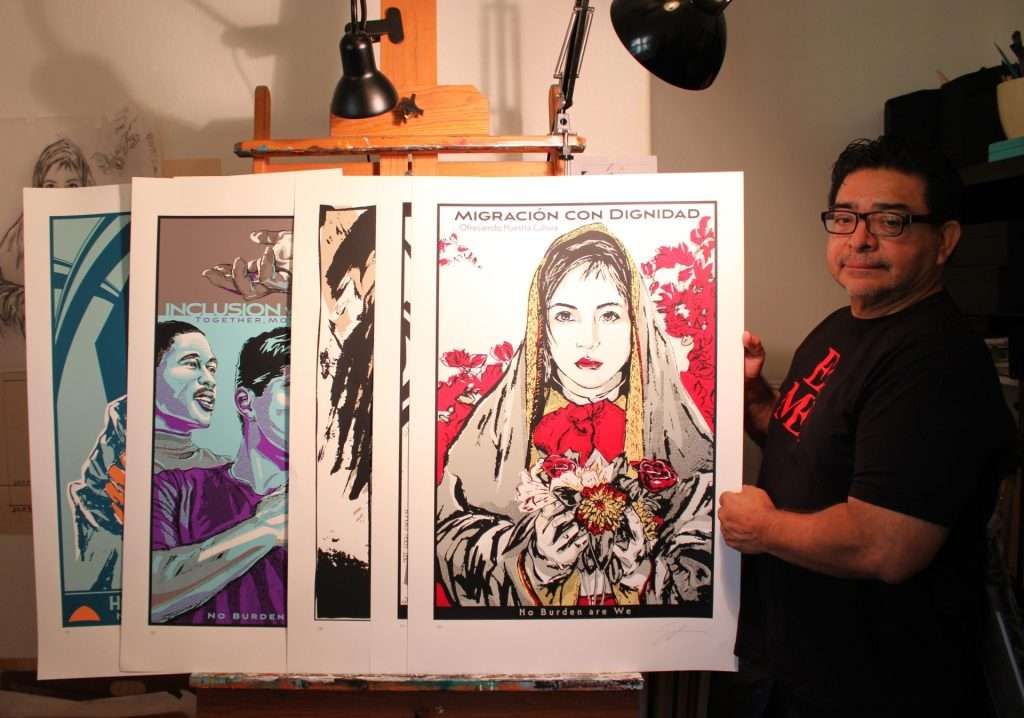

“One day I was working at my studio and I was hyper focused on what I was drawing. My elderly mother called me and said that she ran out of water and asked me to pick some up for her. I didn’t want to leave my studio as I was in the zone, but of course I wanted to help her. As I was driving to the store, a song came on in my car, a ’60s song by the Hollies called, ‘He Ain’t Heavy He’s My Brother,’ the song says, ‘He’s no burden,’ that stuck to me and I kept thinking about it. I dropped off the water and coincidentally heard the song again, I went home and played the song and decided ‘that’s it that the wording I need, no burden is he, no burden is she, no burden are they, no burden are we,” Sigala said.
“No Burden Are We represents that we need to help one another, we also need to accept our vulnerability as humans, we also need to accept that responsibility of helping others, of getting involved,” Sigala said.
“We must empower some individuals, in order to amplify their dignity in their own lives. We still see practices that directly or indirectly limit the dignity of individuals or groups. We all have dignity simply by being human. A violation of dignity is exclusion, being devalued as human beings, discrimination, abuse or neglect. We must recognize each individual with unconditional value. Through the arts we rediscover hope, renewal and empathy,” Sigala said.
An Artist’s Background
Sigala’s art journey began as early as elementary school, “As I went through school from K-12, I was really drawn to art, it was one of the subjects I spent most of my time in,” he said.
Growing up in the Imperial Valley in the ’70s and ’80s made it difficult for Sigala to pursue his art career; he stated that he didn’t see many artists or find many resources for art students in Brawley.
His ultimate goal was to go to art school, but he never knew the first step of applying for school, especially art school. When he told people that he wanted to become an artist, they always responded negatively, saying that he won’t ever find a real job or that it would be difficult to survive on an artist salary.
He began to learn more about what it takes to become a professional artist throughout high school, and since there was no internet back then he resorted to gathering information about all things art at the local library as well as his school’s library.
“I had an art instructor in high school that always encouraged me, he always talked about a school in Pasadena, so I knew one of my main things was to leave the Valley,” Sigala said.
Right after high school, Sigala decided to join the Navy and was able to travel the world. “Once I joined the Navy and traveled around, I had more of a sense of what my goals were, I started learning more about college and how to apply. I also was able to research art schools and take college courses at San Diego where I was stationed. I did really well in school and the instructors encouraged me to pursue my art career,” he said.
Once he left the Navy he became a full-time student at a community college in San Diego and took all of the art courses he could, like figurative drawing, illustration, etc. He then transferred to Pasadena City College and was eventually accepted to the ArtCenter College of Design in Pasadena. He received a scholarship from the school and the military paid for the remainder of the tuition.
Sigala remembers the struggles he went through while attending the ArtCenter, he drove an old car that barely ran and he recalls the embarrassment of pushing on his brakes as it made a loud squeaky sound. Eventually the car was unable to reverse, which led to him having to make conscious decisions of where he parked. He also stated that he was one of very few Mexicans that attended the ArtCenter at the time, and was mistaken as the school’s custodian on various occasions.
He stayed in Pasadena for a total of eight years, graduating from the ArtCenter and starting his own business where he was able to complete projects for Mattel, Nike, Reebok, Taco Bell and several big magazine firms.
During his time in Pasadena he also began teaching art at the Pasadena City College as well as the Los Angeles County High School for the Arts. “I was drawn to education, and I interacted well with the students. I enjoyed seeing the success that the students had and found it extremely fulfilling,” Sigala said.
He eventually moved back to Brawley, and continued his educational journey teaching at Imperial Valley College. He was then offered a position in the education department at the Centinela State Prison; he was hired right after his interview to teach graphic arts.
Although graphic arts wasn’t his strong suit, he took on the role and ended up staying in that position for several years. He later worked his way up to become a school principal at Calipatria State Prison.
Ironically, Sigala originally planned to stay at his first prison job for only one month, but he found that he thoroughly enjoyed sharing his love of art with the prisoners and ended up continuing his career at the local prisons for a total of 27 years.
More recently, he chose to leave that job and go back to his true roots, creating art, which is what he truly loved doing.
“I see my career as chapters, one closes and another opens. As an artist I think that’s really the only way you can continue doing what you do to be a creative person. A creative person has to create. I knew it was time for me to move on from that job and thankfully the transition was relatively easy. I really enjoy what I do, everything has changed in terms of technology, but I’ve kept my same ideas and style, just changed it a little,” Sigala said.
Now that Sigala is out of the educational space, he feels as though academics and art are a partnership, that art is necessary. “Art is something that as children we love to do, when we get to elementary school, art gets left behind to focus on academics, but I believe they can exist together simultaneously so that the students can have a richer life,” Sigala said.
“We really need to bring that richness to our lives, kids in schools having access to visit different museums to learn about history, culture and art is a positive and we really need to continue it. I see the transformation in the Imperial Valley of how both school-aged kids and college students react to art,” Sigala said.

